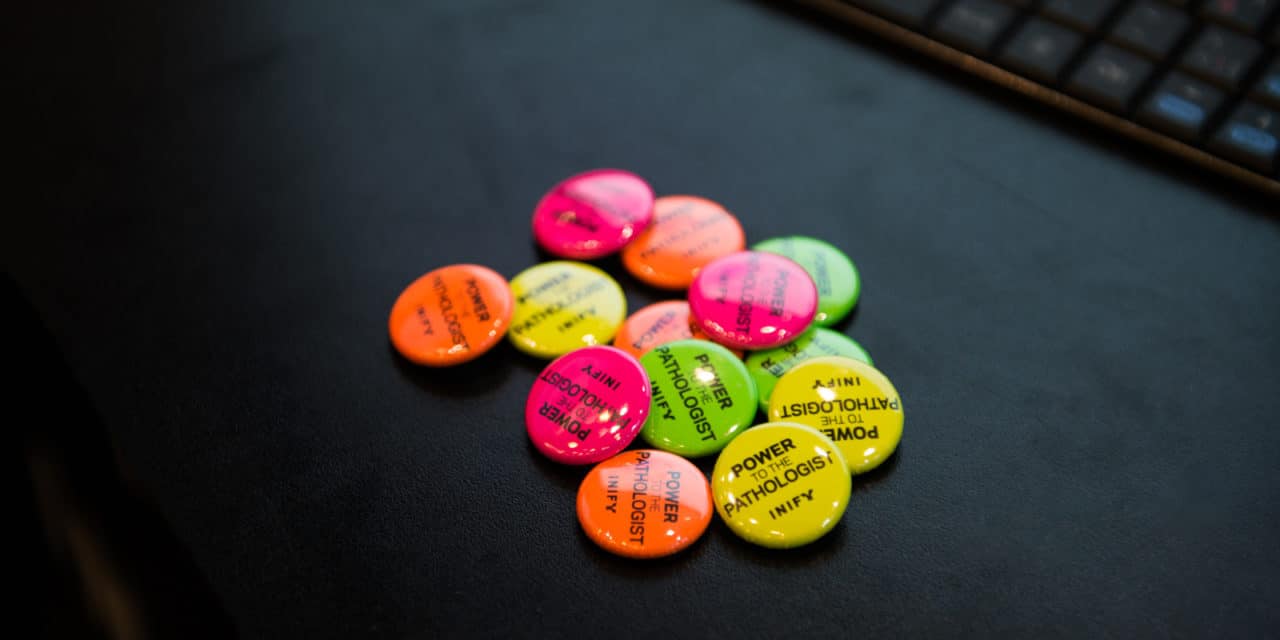ContextVision recently made their first appearance in the field of digital pathology at ECDP/NDP 2018 – the 14th European Congress on Digital Pathology and the 5th Nordic Symposium on Digital Pathology, held in Helsinki, Finland, end of May.
ContextVision brings power to the pathologists at ECDP 2018
ECDP brings together researchers, clinicians and industry to present and discuss science, digital implementation and the latest advances in the field. This year’s congress, organized by the Institute for Molecular Medicine Finland (FIMM), attracted 372 participants from 30 countries – more than double that of the previous ECDP. “Something is clearly going on in this field,” says Johan Lundin, research director at FIMM and one of ECDP's main organizers. “In general, it is attracting more and more interest, much due to the introduction of more efficient algorithms, deep learning and artificial intelligence.”
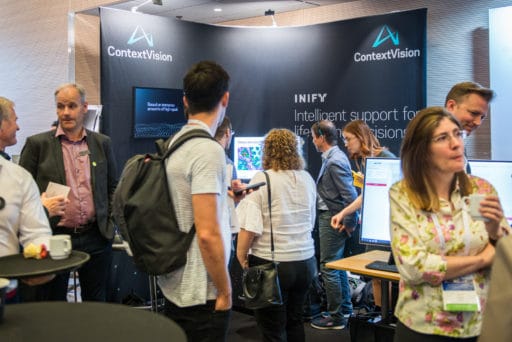
ContextVision’s first digital pathology product
ContextVision made their first appearance at this year’s ECDP, as one of 22 exhibitors. Here, they presented INIFY™ Prostate, a new decision support tool based on artificial intelligence and deep learning, under development.
“INIFY™ Prostate will automatically separate and sort slides containing cancer from those that do not. This means, upon opening their work lists, pathologists will immediately be shown the cases with identified malignant tissues, and areas with malignancy are outlined,” explains Lena Kajland Wilén, Director Business Unit Digital Pathology at ContextVision.
“Our focus is on creating a product that will truly support the pathologist’s daily work – by saving time, reducing inter and intra-variability, increasing accuracy and confidence, and creating quantified reports.“
“INIFY™ Prostate will automatically separate and sort slides containing cancer from those that do not. This means, upon opening their work lists, pathologists will immediately be shown the cases with identified malignant tissues, and areas with malignancy are outlined,” explains Lena Kajland Wilén, Director Business Unit Digital Pathology at ContextVision.
“Our focus is on creating a product that will truly support the pathologist’s daily work – by saving time, reducing inter and intra-variability, increasing accuracy and confidence, and creating quantified reports.“

Nikolay Burlutsky from ContextVision (centre) at the poster presentation

Johan Lundin showed appreciation for ContextVision’s end-user approach: “It’s important for companies to be close to researchers, pathologists, to those who work within this field. This is also an important part of this conference – not just to present the science, but also the interaction between researchers, pathologists, clinicians and the industry – otherwise you don’t know what products to develop.”
Johan Lundin, research director at FIMM and ECDP organizer
The INIFY™ algorithms are based on highly sophisticated training of deep learning networks, using intelligent selection of relevant data through MasterAnnotation™, a unique, patent-filed annotation method developed by ContextVision. Together with Uppsala University, they developed a method to use high-resolution immunofluorescence-staining for biomarkers to generate annotations from H&E images.
Cecilia Lindskog, leader of the research team at Uppsala University, attended ECDP to present the MasterAnnotation™ method in detail. She describes the automatized workflow they set up, allowing up to 35 slides to be stained simultaneously. Each slide is triple-stained against three different biomarkers. After removing the coverslip, the slide are stained again, this time with hematoxylin and eosin. The fluorescence markers are then used as an overlay to highlight exact areas of interest – that is, those areas suspected to contain cancer.
“The advantage of this method is that it can be performed on the same slide, instead of having to puzzle different images together,” Cecilia Lindskog points out. “This method allows us to define exact areas of expected cancer, in an objective, consistent way. They are then verified by pathologists for quality control.”
The abstract presenting the MasterAnnotation™ training method landed ContextVision a finalist position in the ESDIP Digital Diagnostics Award Competition. Congress participants showed great interest in both INIFY™ Prostate and the technology behind it.
Cecilia Lindskog, leader of the research team at Uppsala University, attended ECDP to present the MasterAnnotation™ method in detail. She describes the automatized workflow they set up, allowing up to 35 slides to be stained simultaneously. Each slide is triple-stained against three different biomarkers. After removing the coverslip, the slide are stained again, this time with hematoxylin and eosin. The fluorescence markers are then used as an overlay to highlight exact areas of interest – that is, those areas suspected to contain cancer.
“The advantage of this method is that it can be performed on the same slide, instead of having to puzzle different images together,” Cecilia Lindskog points out. “This method allows us to define exact areas of expected cancer, in an objective, consistent way. They are then verified by pathologists for quality control.”
The abstract presenting the MasterAnnotation™ training method landed ContextVision a finalist position in the ESDIP Digital Diagnostics Award Competition. Congress participants showed great interest in both INIFY™ Prostate and the technology behind it.
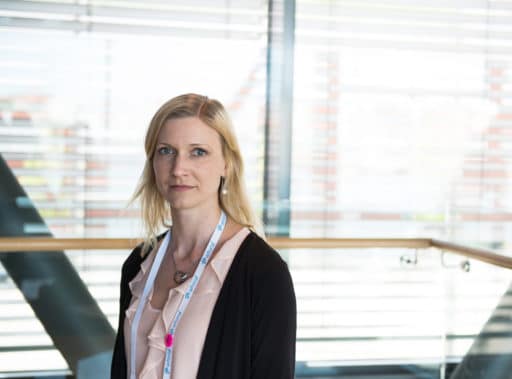
Cecilia Lindskog, Uppsala University

“What’s interesting is how they use fluorescence to actually find and classify the parts of the tissue that are of interest, without using a pathologist. It seems they are advanced in what they do and how far they have come,” says Anders Sjögren from Lumito AB, Sweden.
Anders Sjögren, Lumito AB
The challenges of going digital
Digital diagnostics and artificial intelligence are the main themes of this year’s congress. Johan Lundin believes these approaches to hold great promise for the future. “Advanced digital algorithms for interpretation of samples are starting to be capable of tasks now done by human experts, that have not previously been possible with image analysis. We will be seeing more and more complex entities, and at some point even full digital diagnostics.”
Despite the exciting developments in digital pathology, there are still major challenges to be overcome – mainly, the fact that so many clinics and hospitals have not yet begun to digitalize their workflow, but also a hesitancy to involve algorithms in what has traditionally been a human task. This was a common observation among those who took interest in the INIFY™ technology.
“Digital pathology is the future of pathology and medicine. The progress of pathology has a big problem – the belief among many pathologists that technology will eliminate the need for their specialist knowledge,” says Rodrigo Ugalde Herra, medical resident of pathology, Central University Hospital of Asturias, Spain.
His colleague, biochemistry analyst Anna Ibanez Fernandez, agrees: “This product is very interesting for our work, but unfortunately in our hospital we still don’t have the digital technology. This is a product that might help us make that development; hopefully we’ll be scanning slides within a year or two.”
Despite the exciting developments in digital pathology, there are still major challenges to be overcome – mainly, the fact that so many clinics and hospitals have not yet begun to digitalize their workflow, but also a hesitancy to involve algorithms in what has traditionally been a human task. This was a common observation among those who took interest in the INIFY™ technology.
“Digital pathology is the future of pathology and medicine. The progress of pathology has a big problem – the belief among many pathologists that technology will eliminate the need for their specialist knowledge,” says Rodrigo Ugalde Herra, medical resident of pathology, Central University Hospital of Asturias, Spain.
His colleague, biochemistry analyst Anna Ibanez Fernandez, agrees: “This product is very interesting for our work, but unfortunately in our hospital we still don’t have the digital technology. This is a product that might help us make that development; hopefully we’ll be scanning slides within a year or two.”
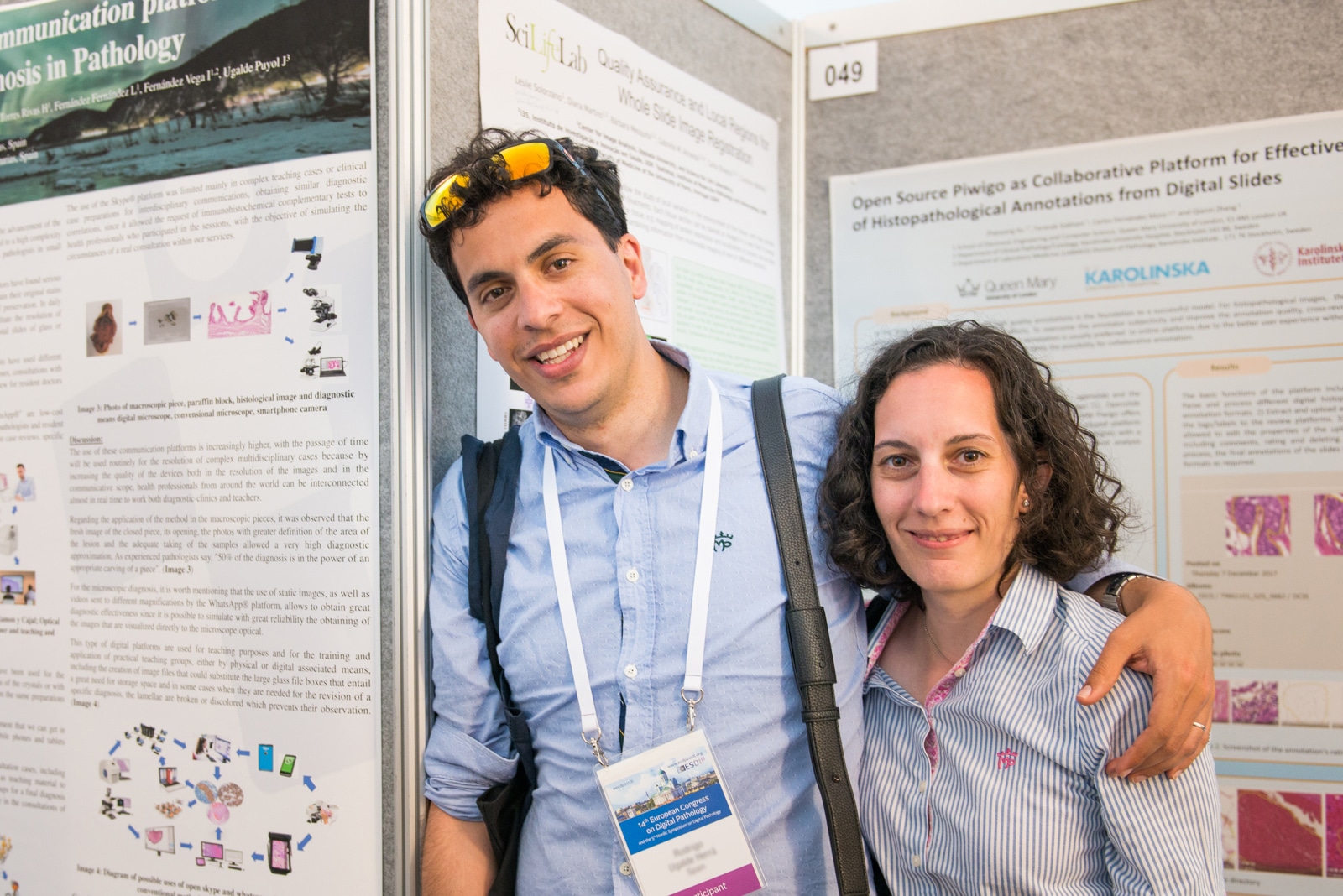
Rodrigo Ugalde Herra and Anna Ibanez Fernandez from Central University Hospital of Asturias, Spain
ContextVision’s first digital pathology product
The next congress is to be held in 2019 in Warwick, UK. By then, INIFY™ Prostate will be on the market. ContextVision is already developing more products for the INIFY™ portfolio.
Keep an eye out for them at ECDP 2019!
Keep an eye out for them at ECDP 2019!
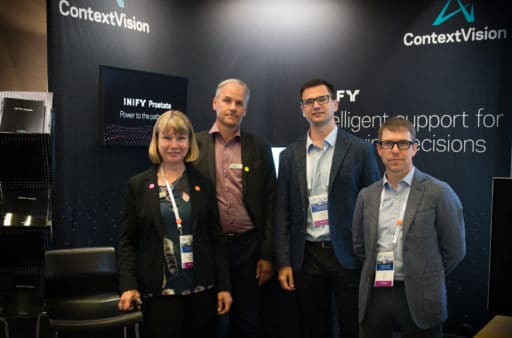
ContextVision’s ECDP team
